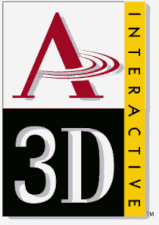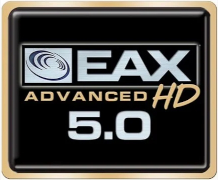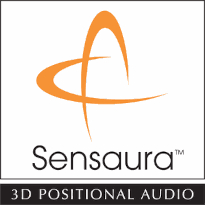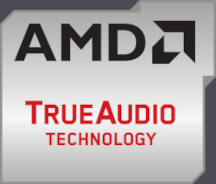


Aureal Semiconductor burst onto the scene soon after Microsoft introduced the first version of DirectSound3D in 1996. The company combined the expertise of Crystal River Engineering, renowned for professional audio projects with clients such as NASA, with MediaVision's reputation for producing high-quality sound cards. Their goal was to boost audio fidelity and real-time responsiveness by leveraging a dedicated DSP chip on the sound card and deploying algorithms far more advanced than the rudimentary routines of early DS3D.
Designing a chip capable of handling all DSP tasks and interfacing directly with the PCI bus proved challenging. MediaVision also carried the stigma of cloning Sound Blaster 16 cards, which dampened early enthusiasm. Aureal's first offering, the Monster Sound XL, relied on a programmable AD2181 DSP not tailored for positional audio. Although this chip could process only eight simultaneous 3D voices, matching the maximum polyphony of most DOS game engines since 1993, the frequent use of short sound effects in games mitigated this limitation.
Despite these hurdles, A3D-capable hardware and an API that mirrored DirectSound3D's syntax found success. Between 1997 and 1999, many game developers integrated A3D support. Recognizing that few users employed multi-speaker setups in the late '90s, Aureal optimized special algorithms for two-speaker configurations and headphones, delivering impressive A:B comparisons. True three-dimensional immersion, however, requires either six or more speakers or head-tracking paired with headphones.
When DirectX 5 arrived in 1997, DirectSound3D gained the ability to offload processing to a DSP chip instead of relying solely on the CPU. In autumn 1998 - just over a year after the first A3D card Creative Labs released the Sound Blaster Live, ramping up its campaign against Aureal.
In 1997 Aureal unveiled A3D 2.0 with a technology they called "Wavetracing." According to Aureal, "Wavetracing parses the 3D geometry description of a space to trace sound waves in real time as they reflect and are occluded by passive acoustic objects. Sounds don't just emanate from a source; they bounce off walls, leak through doors, fade around corners, and even shift overhead as you move into an open area." At launch, only the Vortex 2 (AU8830) chip supported A3D 2.0.
A3D harnessed a subset of in-game 3D world data to model both direct (A3Dspace) and reflected (A3Dverb) audio streams, handling up to 60 first-order reflections in version 2.0. By contrast, Creative's EAX series applied static reverb without calculating actual surface reflections. Although Aureal planned to add true reverb soon, EA's immediate, richer-sounding effect won the market's favor.
Because A3D was a proprietary, licensed standard, many developers dropped it once free alternatives like EAX and DS3D became available. Without widespread game support, Wavetracing hardware lost its appeal. Delays in shipping Vortex 2 boards and setbacks in Aureal's partnership with Diamond Multimedia further hampered adoption, while EAX dominated headlines.
In 1998 Creative Labs sued Aureal for alleged patent infringement, and Aureal countered with its own claim, believing Creative had violated their patents.
By 1999, both DirectSound3D and EAX saw updated releases. Rumors circulated that Creative and Microsoft collaborated closely to fix bugs, streamline development, and incorporate A3D features under new labels - avoiding licensing fees to Aureal. Some sound cards even shipped with a pseudo "a3d.dll" that intercepted A3D calls and translated them into DS3D commands.
In 2000, Aureal announced the Vortex SQ3500 Turbo. Brendan O'Flaherty, Aureal's senior vice president of operations, proclaimed: "The SQ3500 uses the unprecedented power of both the Aureal Vortex2 processor and our new Turbo DSP module to deliver acceleration for A3D 3.0, advanced geometry-based reverberation, and Dolby Digital decoding, resulting in a package that should appeal to all PC audio users."
Ultimately, the SQ3500 never shipped, though a few prototypes reportedly exist. Although courts ruled in Aureal's favor in the ensuing legal battle, it was ultimately a Pyrrhic victory. High legal fees and the loss of financial backing from Diamond Multimedia and others proved fatal. Aureal filed for bankruptcy later that year. After a bidding war with Hercules/Guillemot that peaked at 21 million USD, Creative Labs acquired Aureal - effectively eliminating their strongest competitor and stalling the progress of 3D audio. Following the acquisition, support for the A3D API was discontinued.

Creative Labs
EAX (Envionmental Audio Extensions) is a sound system developed by Creative Technology Ltd. used by many older games for realistic reverb, surround sounds, doppler effect simulation, surround sound and more.
EAX is compatible with Creative and Realtek (via 3D Soundback software) soundcards.
Hardware accelerated DSP processing of EAX only happens on cards with EMU chips.
Sensaura Technology
Sensaura is a technology and a brand name that was originally developed by Sensaura Ltd., a UK-based company, which specialized in audio technologies and solutions for the personal computer market.
Sensaura's technologies aimed to enhance audio experiences by providing advanced features such as 3D positional audio, environmental sound effects, and software-based audio processing.
Sensaura's technology was used in a variety of sound cards and onboard audio solutions, particularly in the late 1990s and early 2000s.
The company and its technologies were later acquired by Cirrus Logic, which integrated Sensaura's audio processing technology into its audio chipsets.
QSound Labs
Q3D Interactive is a 3D sound positioning technology that is closely coupled to a multi-channel mix engine. Q3D takes one or more signals representing individual voices, instruments, or sound effects, applies processing to position each input independently at the chosen location in 3D space, and mixes the results down to the number of channels required
for the target delivery system.
AMD
TrueAudio is the first serious attempt since the early 2000s to improve the quality and quantity of audio spatialization and effects on the PC.
Starting with Windows Vista, hardware acceleration for DirectSound and DirectSound3D has been dropped. With multi-platform titles (i.e. console ports) becoming increasingly common, PC audio has by most metrics regressed since 2005.
This has led to game audio ranging anywhere from good to terrible, depending on the capabilities of the audio stack used in a game.
The best of games will offer a solid spatialization algorithm (and spend the CPU time to do it) while the worst of games will usually be optimized for a 2 and 5.1 speaker setups, mixing down from that for other setups while using minimal environmental processing and effects.
The entire AMD TrueAudio hardware block is built directly into the die of certain AMD Radeon Rx 200 series cards; most notably the R9 295X2, R9 290X, R9 290 and R7 260X GPUs.
As well as Kaveri and Carrizo-based APUs, including the PlayStation 4.


